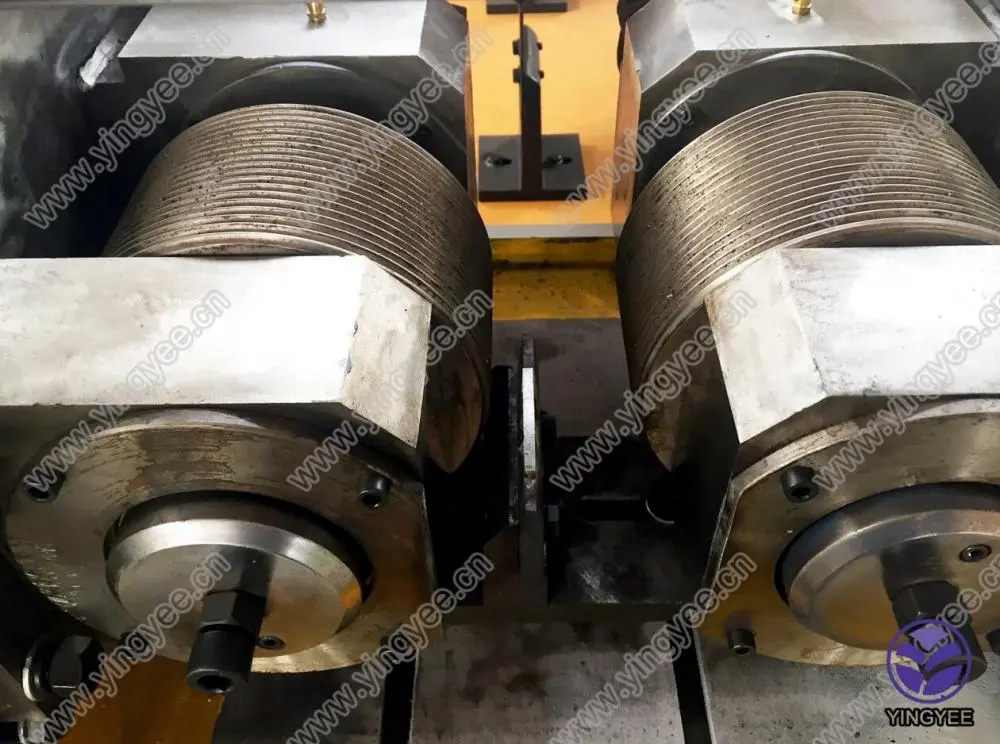
The Corrugated Sheet Roof Roll Forming Line An Overview
In the construction industry, roofing materials play a crucial role in determining the durability, aesthetic appeal, and overall functionality of a building. Among various roofing types, corrugated sheets have gained immense popularity due to their unique properties, cost-effectiveness, and ease of installation. The production of these sheets typically involves a highly specialized process known as the roll forming process. A critical component in this process is the corrugated sheet roof roll forming line, designed to streamline the production and ensure the quality of corrugated roofing sheets.
What is a Corrugated Sheet Roof Roll Forming Line?
A corrugated sheet roof roll forming line is a series of machines that transform flat metal sheets into corrugated roofing products. The process begins with uncoiling a large metal sheet, often made from steel or aluminum. The metal sheet is then fed into a roll forming machine, which consists of multiple rollers that progressively shape the flat sheet into the desired corrugated profile. Through a series of bending and forming processes, the sheet acquires its characteristic ribbed structure, which enhances its strength and rigidity.
Key Components of the Roll Forming Line
1. Uncoiler The uncoiler is responsible for holding and unwinding the raw metal coil before it enters the roll forming section. It ensures a steady feed of material and can accommodate various coil sizes.
2. Roll Forming Station This is the heart of the production line where the actual shaping occurs. The rollers are carefully designed to create specific corrugated profiles. The precision of this setup is critical as it directly affects the final product's quality.
3. Cutting Mechanism After the metal has been formed into the desired shape, it is passed to the cutting station. Depending on the specifications, sheets can be cut to predetermined lengths to meet various application requirements.
4. Stacking and Packaging Once cut, the finished corrugated sheets are stacked and prepared for shipping. Automated stacking systems can enhance efficiency by organizing the sheets neatly for transport.
Advantages of Using a Corrugated Sheet Roof Roll Forming Line

The implementation of a dedicated roll forming line for corrugated sheets offers several advantages
- Efficiency This automated process allows for high production rates while minimizing labor costs. Manufacturers can produce large volumes of corrugated sheets in a relatively short amount of time.
- Quality Control Automated systems help maintain consistency in product quality. Each sheet produced is uniform in size and shape, which is critical for construction applications where precision is paramount.
- Versatility Roll forming lines can be customized to produce various profiles and thicknesses, making them adaptable for different projects. This flexibility allows manufacturers to meet specific customer demands effectively.
- Cost-Effectiveness While the initial investment in a roll forming line may be significant, the long-term savings in labor, material waste reduction, and increased production capacity make it a financially viable option for manufacturers.
Applications of Corrugated Roofing Sheets
The final products from a corrugated sheet roof roll forming line have a wide array of applications. These roofing sheets are commonly used in residential, commercial, and industrial buildings. They are particularly valued in areas prone to extreme weather due to their ability to withstand heavy rain, snow, and wind. Additionally, the light weight of corrugated sheets simplifies transportation and installation, making them a preferred choice for many contractors.
Conclusion
The corrugated sheet roof roll forming line represents a significant advancement in roofing material production. By utilizing specialized equipment to produce high-quality corrugated sheets, manufacturers can effectively meet the growing demands of the construction industry. The benefits of efficiency, cost-effectiveness, and quality ensure that corrugated roofing remains a popular choice for builders and homeowners alike. As the construction landscape evolves, the role of innovation in manufacturing processes, like roll forming, will continue to shape the future of roofing solutions.